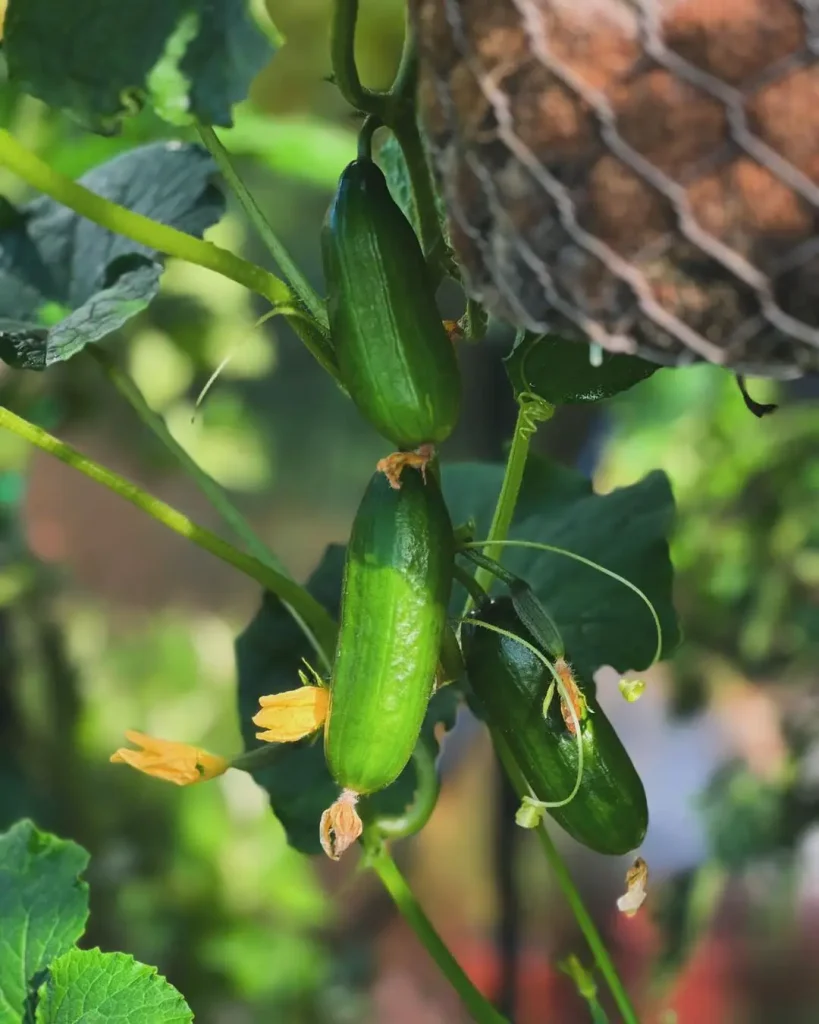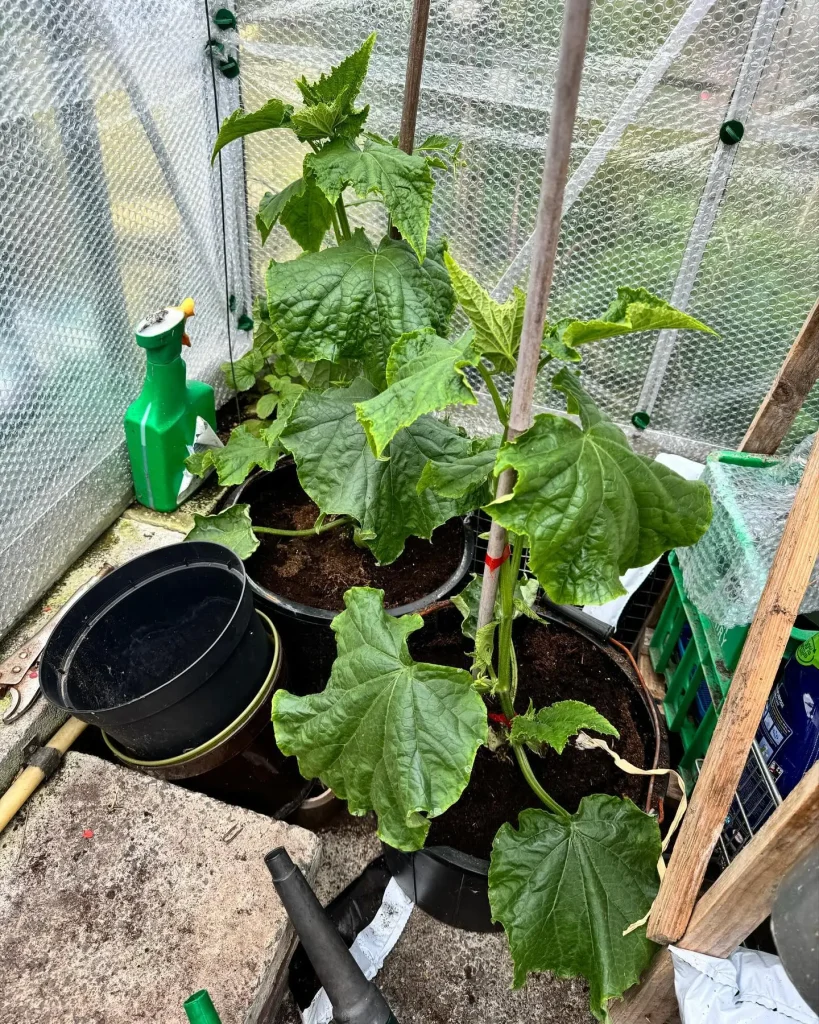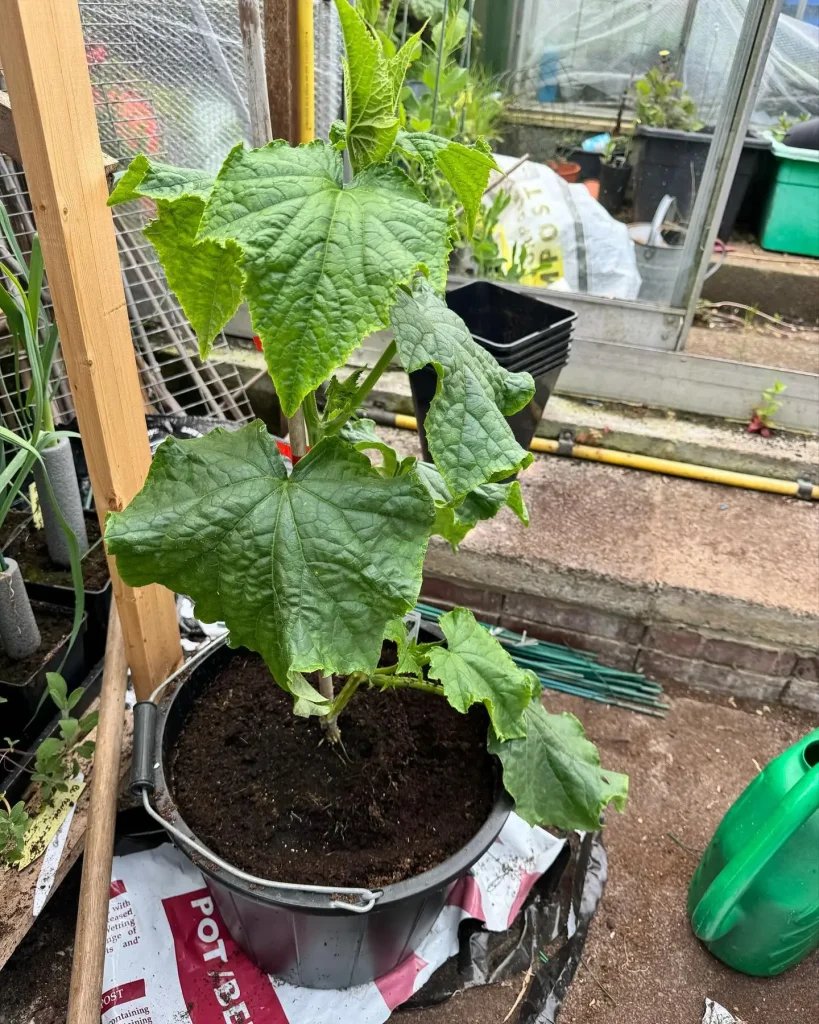Are you ready to learn how to grow a bountiful cucumber crop, even if you’re short on space? Well, buckle up, because I’m about to share my top tips and tricks for growing tons of cucumbers in pots. Sounds exciting, right? I can practically see the crunchy, delicious cukes in your future!

Now, I know what you’re thinking – “Cucumbers in pots? Isn’t that going to be a ton of work?” Well, my friend, I’m here to tell you that with the right approach, growing cucumbers in containers can be a total breeze. In fact, it might just become your new favorite gardening hobby.
So, why should you consider growing cucumbers in pots, you ask? Well, let me tell you, there are some pretty awesome benefits to this method. First of all, it’s perfect for those of us with limited space, like tiny urban balconies or teeny-tiny backyards. No need to worry about finding room for a sprawling cucumber patch – just grab a few pots and you’re good to go!
Another awesome perk is that you can easily control the growing conditions. No more battling with heavy clay soil or dealing with pesky pests. When you grow in pots, you get to call the shots on the soil, water, and even the position of the plants. Talk about a gardener’s dream, am I right?
And let’s not forget about the convenience factor. Imagine being able to step out your back door and snip off a few cucumbers for your salad or sandwich. No more long treks to the garden or waiting for the perfect time to harvest. It’s all right at your fingertips!
Alright, now that I’ve got you all excited about growing cucumbers in pots, let’s dive into the nitty-gritty details, shall we?
Here’s your step-by-step guide to cucumber container gardening success:
Choosing the Right Pots
The first and most important step is selecting the right pots for your cucumbers. Now, I know what you’re thinking – “How hard can it be to pick a pot?” But trust me, there’s a bit more to it than just grabbing the first container you see.

Ideally, you’ll want to use pots that are at least 12 inches deep and 18 inches wide. This gives your cucumber plants plenty of room to spread out those roots and really thrive. And don’t forget to make sure your pots have good drainage holes – you don’t want your plants sitting in water and getting all waterlogged.
When it comes to the material, you’ve got a few options. Plastic, terracotta, and fabric pots all work great. Just keep in mind that terracotta can dry out a bit faster, so you may need to water more frequently. And while fabric pots are awesome for air circulation, they can be a bit trickier to move around.

Personally, I’m a big fan of using self-watering containers. These handy little guys have a built-in reservoir that helps keep the soil consistently moist, which is crucial for cucumbers. Plus, they take the guesswork out of watering, so you can focus on other important gardening tasks.
Selecting the Right Cucumber Variety

Alright, now that you’ve got your pots sorted, it’s time to choose your cucumber varieties. Now, I know there are a ton of different types out there, from the classic slicing cukes to the tiny, crunchy picklers. But for container gardening, I’ve got a few favorites that I think you’ll love.
First up, we’ve got the good old reliable Marketmore 76. This high-yielding variety is perfect for pots, with a compact, bushy habit and delicious, medium-sized fruits. Plus, it’s disease-resistant, so you don’t have to worry about those pesky cucumber problems.
Another great option is the Spacemaster 80, which was specifically bred for growing in small spaces. These guys stay nice and compact, but still produce an impressive harvest of crisp, cool cucumbers. And did I mention they’re perfect for pickling? Yum!
And if you’re feeling a little adventurous, you might want to try out the Lemon cucumber. As the name suggests, these little guys have a bright, lemony flavor and a unique, rounded shape. They’re super cute and make a great addition to salads or as a tasty snack.

Whichever variety you choose, make sure to read the seed packet or plant tag carefully. It’ll give you all the info you need on things like plant size, days to maturity, and any special growing requirements.
Preparing the Soil
Okay, so you’ve got your pots and you’ve picked out your cucumber varieties. Now it’s time to get that soil ready for planting. And let me tell you, choosing the right potting mix is crucial for success.
You’ll want to use a high-quality, well-draining potting soil that’s specifically formulated for containers. Avoid using regular garden soil, as it can get too compacted and heavy in pots. Look for a mix that’s light, fluffy, and full of nutrients.
Before you plant, it’s also a good idea to mix in some compost or a slow-release organic fertilizer. This will give your cucumbers an extra boost of nutrients to really get them growing strong. Just be sure not to overdo it – you don’t want to accidentally create a fertilizer-induced cucumber monster!
And don’t forget to give the soil a good soak before you start planting. This helps it settle in and ensures your cucumber seeds or seedlings will have plenty of moisture to get started.
Planting and Spacing
Now comes the fun part – time to get those cucumbers in the ground! Or, well, in the pots, I guess.
If you’re starting from seed, plant them about an inch deep and space them out about 12 inches apart. This gives each plant plenty of room to spread out those vines and produce a bountiful harvest.
For seedlings, you’ll want to plant them at the same depth they were growing in their original containers. Gently loosen the roots before placing them in the soil and make sure to space them out the same as the seeds.
One important tip – be sure to give your cucumbers something to climb on! They’re natural vining plants, so they’ll need some support as they start to sprawl. You can use a trellis, cage, or even a tomato cage to give them a helping hand.
Watering and Feeding
Alright, your cucumbers are all snug in their new homes. Now it’s time to talk about their favorite things – water and food!
Cucumbers are thirsty little plants, so you’ll want to make sure they’re getting about 1-2 inches of water per week. The best way to do this is to check the soil daily and water whenever the top inch or so starts to feel dry.
Now, I know what you’re thinking – “But Monica, I have a self-watering pot! Doesn’t that mean I can just set it and forget it?” Well, yes and no. Even with a self-watering system, you’ll still want to check the reservoir regularly and refill it as needed. Cucumbers are notorious water hogs, so you don’t want to let that water level dip too low.
As for feeding, you’ll want to give your cucumbers a steady supply of nutrients throughout the growing season. A balanced, water-soluble fertilizer applied every 2-3 weeks should do the trick. Or you can try a slow-release organic option, which takes the guesswork out of feeding.
Just be sure not to overdo it on the fertilizer, as too much can actually stunt your cucumber plants’ growth. Stick to the recommended amounts on the product label and you’ll be good to go.
Pruning and Training
Okay, now that we’ve got the watering and feeding under control, let’s talk about keeping those cucumber vines in check. Because trust me, they can get a little out of hand if you’re not careful.
The key is to start pruning and training your plants early on. Once they reach about 12 inches tall, give them a gentle trim, removing any competing shoots or suckers. This helps redirect the plant’s energy into producing those delicious cukes instead of just more foliage.
You’ll also want to train the vines to grow up your trellis or cage. Gently guide them and secure them with soft ties or clips. This not only helps save space, but it also improves air circulation and reduces the risk of disease.
And don’t worry, this pruning and training doesn’t have to be a super time-consuming chore. Just spend a few minutes every week or so giving your plants a quick once-over and adjusting the vines as needed. It’s a small price to pay for a big cucumber payoff, am I right?
Pest and Disease Management
Now, I know what you’re thinking – “But Monica, won’t growing cucumbers in pots make them more susceptible to pests and diseases?” And you know what? You’re absolutely right. Container gardening does come with its own set of challenges when it comes to keeping your plants healthy.
But don’t worry, my friends, I’ve got your back. The key is to stay on top of things and address any issues as soon as you spot them. Keep a close eye on your plants and be on the lookout for common cucumber problems like powdery mildew, cucurbit beetles, or aphids.
If you do happen to spot something amiss, don’t panic! There are plenty of organic, eco-friendly solutions out there. Try mixing up a simple baking soda or neem oil spray to nip those problems in the bud. And remember, prevention is always better than cure, so make sure to provide your cucumbers with plenty of air circulation and sunlight.
Harvesting and Storage
Alright, now for the fun part – harvesting your delicious cucumber bounty! As your plants start to mature, you’ll want to keep a close eye on them and pick the cucumbers at the perfect stage of ripeness.
Generally, you’ll want to harvest your cukes when they’re about 6-8 inches long and have a firm, glossy skin. Gently snip them off the vine with a clean pair of scissors or pruners, leaving a bit of stem attached.
And don’t forget to keep harvesting regularly! The more you pick, the more your plants will produce. It’s a win-win situation, if you ask me.
Once you’ve got your freshly harvested cucumbers, you can enjoy them right away in salads, sandwiches, or as a tasty snack. Or, if you’re feeling ambitious, you can try your hand at pickling or canning them for long-term storage.
Wrapping Up
Well, there you have it, folks – everything you need to know to grow a bumper crop of cucumbers in pots. From selecting the right varieties to managing pests and diseases, I’ve covered all the bases.
So, what are you waiting for? Grab those containers, get planting, and get ready to enjoy a summer filled with crisp, delicious homegrown cucumbers. Trust me, your taste buds (and your stomach) will thank you.
Happy gardening, my friends!